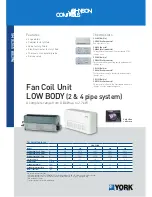
TRANSTIG 170Pi
BASIC WELDING GUIDE
4-16
Manual 0-5241
TIG Welding is generally regarded as a specialised process that requires operator competency. While many of
the principles outlined in the previous Arc Welding section are applicable a comprehensive outline of the TIG
Welding process is outside the scope of this Operating Manual. For further information please refer to www.
cigweld.com.au or contact Cigweld.
4.04 TIG (GTAW) Welding Problems
FAULT
CAUSE
REMEDY
1 Excessive bead build up or
poor penetration or poor
fusion at edges of weld.
Welding current is too
low
Increase weld current and/or faulty joint
preparation.
2 Weld bead too wide and
flat or undercut at edges
of weld or excessive burn
through.
Welding current is too
high
Decrease weld current.
3 Weld bead too small or
insufficient penetration or
ripples in bead are widely
spaced apart.
Travel speed too fast
Reduce travel speed.
4 Weld bead too wide or
excessive bead build up or
excessive penetration in
butt joint.
Travel speed too slow
Increase travel speed.
5 Uneven leg length in fillet
joint
Wrong placement of
filler rod
Re-position filler rod.
6 Electrode melts or oxidises
when an arc is struck.
A Torch lead connected
to positive welding
terminal.
A Connect torch lead to negative welding
terminal.
B No gas flowing to weld-
ing region.
B Check the gas lines for kinks or breaks
and gas cylinder contents.
C Torch is clogged with
dust or dirt.
C Clean torch.
D Gas hose is cut.
D Replace gas hose.
E Gas passage contains
impurities.
E Disconnect gas hose from the rear of
Power Source then raise gas pressure
and blow out impurities.
F Gas regulator turned
off.
F Turn on.
G The electrode is too
small for the welding
current.
G Increase electrode diameter or reduce the
welding current.
















































